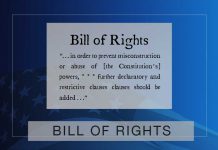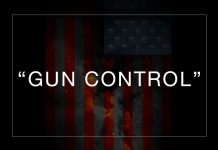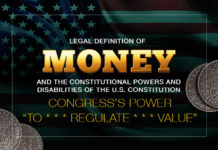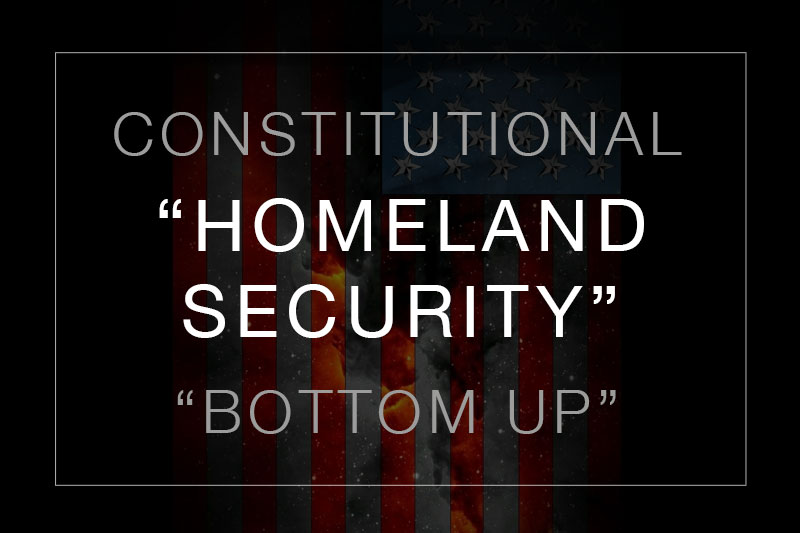Last Updated on July 17, 2023 by Constitutional Militia
Preamble to the Constitution
The Preamble sets out the mandatory and unconditional purposes of the Constitution. In so doing, it establishes an overarching rule of construction and application with respect to everything that follows it.
Source: Gibbons v.Ogden, 20 U.S. (9 Wheaton) 1, 187-189 (1824); Rhode Island v. Massachusetts, 30 U.S. (12 Peters) 657, 730-731 (1838). See generally W. Crosskey, Politics and the Constitution in the History of the United States (Chicago, Illinois: University of Chicago Press, 1953), Volume 1, at 374-379; Joseph Story, Commentaries on the Constitution of the United States (Boston Massachusetts: Little, Brown, and Company, Fifth Edition, 1905), Volume 1, §§ 458 through 462, at 350-352.
Preamble: Strict rule of interpretation with respect to everything that follows.
If the “homeland” (an Establishment propaganda term) is the United States of America, then obviously her “security” is defined by her Constitution, because there cannot be security without law, and the Constitution is the supreme law of the land. Just as obviously, those who are to benefit from that security are the authors of the Constitution and their descendants: We the People. The essentials of America’s true, historic “homeland security” are to be found in the Preamble to the Constitution:
“We the People of the United States, in Order to form a more perfect Union, establish Justice, insure domestic Tranquility, provide for the common defence, promote the general Welfare, and secure the Blessings of Liberty to ourselves and our Posterity, do ordain and establish this Constitution for the United States of America.”
The purposes the Preamble identified in the original Constitution WE THE PEOPLE intended to be permanent. And, since 1788, no one has ever proposed that even one of those purposes should be expunged from the Constitution. The original Constitution incorporated “the Militia of the several States” as permanent establishments within its federal system so that the goals of the Preamble would be served. To that end, the original Constitution empowered Congress “[t]o make all Laws which shall be necessary and proper for carrying into Execution” its enumerated powers with respect to the Militia.[1] Moreover, the original Constitution explicitly assigned and entrusted to the Militia, and to only the Militia, the critical authority and responsibility “to execute the Laws of the Union, suppress Insurrections and repel Invasions”[2]—without the fulfillment of which, when necessary, the Union could have been expected not to survive. So, from 1788 onwards, in order to satisfy the Preamble, it was always “necessary and proper” as a matter of law for Congress actually “[t]o provide for organizing, arming, and disciplining, the Militia”[3] in some sufficient manner at all times. Congress’s powers with respect to the Militia, then, constituted duties which it was required to fulfill to the maximum extent practically possible either through the General Government’s own action or through reliance on the States or the people—whether the Second Amendment had existed or not.[4]
Other than the Preamble, the Second Amendment is the only place in which the Constitution explains the reason for any right, power, privilege, duty, or disability that it recognizes.[5] So the interconnections among “the right of the people to keep and bear Arms”, “[a] well regulated Militia”, and “the security of a free State” must be extremely important.[6]
The Preamble is more than an exhortation. It is neither a mere “wish list” nor a set of dispensable options. The Preamble is a statement of political purpose, a legal mandate and requirement, and a strict rule of interpretation. All the powers and disabilities (that is, absences of power) that follow in the body of the Constitution are to be construed in light of, and to be employed so as to advance, all of the goals the Preamble sets forth, not to thwart, subvert, or ignore any of them. That all of the goals are of equal importance and to be achieved simultaneously the Preamble makes clear in its use of the conjunction “and”.[7]
How can the para-military police state being erected across the United States in the name of “homeland security” possibly fulfill any of the Preamble’s goals? Obviously it cannot. A police state provides security only for the elitists who run it and who benefit from the repression it imposes on the mass of citizens. By hypothesis, then, today’s push for “homeland security” actually aims, not at the security of the United States or of the American people under the Constitution, but at the Establishment’s security over the Constitution and against the people.[8]





























